As the united call to stop BLMs unchecked assault on the American mustang & burro continues to gain momentum, with over 180 organizations and celebrities now supporting a moratorium to halt any further removals until key issues can be resolved, here’s one more reason to demand a “cease and desist” until a full scale investigation can be conducted on the Wild Horse & Burro Program to determine what’s really left out on the range.
Since 2001, BLM has reported removing over 80,000 wild horses and burros at an average of 10,000 animals per year. Despite these aggressive efforts, they continue to report little to no impact has been made on reining in their “excess” populations, a nebulous term BLM continues to define and an even more elusive goal they never seem able to achieve.
According to BLM, their target is a maximum national population goal of 26,578 wild horses and burros, a target that BLM has cut by over 2,000 animals just in the last five years, and BLM intends on spending approximately $32 million dollars to remove over 12,000 animals this year to reach it.
In the spring of 2009, BLM reported over 37,000 wild horses and burros still roamed free on public lands throughout the West but if you look at the numbers, serious questions arise as to the validity of these claims.
For example, in 2002, BLM removed 12,029 wild horses and burros equating to 31% of those reported on the range; despite this high percentage, BLM reported it only reduced the national totals by a mere 1,600 animals. In 2003, BLM removed over 10,000 more (26%) but still the removals seemingly made no impact as BLM now reported national totals declined by only 51 animals.
In July 2008, an independent analysis examined BLMs statistics and found a very different scenario than what BLM continued to report regarding the number of animals still remaining on the range published in, “America’s Mustangs and Burros: What’s Left, The High Cost of Miscalculating and Will They Survive?”
Using the same methods BLM uses to manage the Wild Horse & Burro Program, an alternative population emerged that concluded, as of February 28, 2008, BLM had already removed between 11,000 to 14,000 more animals than necessary to achieve their national population goals.
Still, the round ups continued….
Today, American Herds presents the updated numbers of what may be all that’s really left of America’s free-roaming herds as of September 30, 2009, now hovering between 22,000 to 26,000 less than BLM continues to publicly report.
In addition to graphically illustrating the annual population declines, at least 52 Herd Management Areas have been found to have extreme jumps in annual population reports that were key in supporting BLMs national “excess” with 25 of these occurring between 2007/2008 and 16 between 2008/2009. To learn more, Click Here.
Until Congress demands an independent count of the populations BLM has been reporting, both on and off the range, the evidence continues to mount that “What’s Left?” has reached critical levels of concern.



Read the Full Report at:
America’s Mustangs & Burros:
What’s Left, The High Cost of Miscalculating
and Will They Survive?
SUMMARY REPORT
Method Overview and Alternative Populations
By C.R. MacDonald
October 2009
Graphs showing annual population declines since 2001
can be found on pages 15-29.
Since 2001, BLM has reported removing over 80,000 wild horses and burros at an average of 10,000 animals per year. Despite these aggressive efforts, they continue to report little to no impact has been made on reining in their “excess” populations, a nebulous term BLM continues to define and an even more elusive goal they never seem able to achieve.
According to BLM, their target is a maximum national population goal of 26,578 wild horses and burros, a target that BLM has cut by over 2,000 animals just in the last five years, and BLM intends on spending approximately $32 million dollars to remove over 12,000 animals this year to reach it.
In the spring of 2009, BLM reported over 37,000 wild horses and burros still roamed free on public lands throughout the West but if you look at the numbers, serious questions arise as to the validity of these claims.
For example, in 2002, BLM removed 12,029 wild horses and burros equating to 31% of those reported on the range; despite this high percentage, BLM reported it only reduced the national totals by a mere 1,600 animals. In 2003, BLM removed over 10,000 more (26%) but still the removals seemingly made no impact as BLM now reported national totals declined by only 51 animals.
In July 2008, an independent analysis examined BLMs statistics and found a very different scenario than what BLM continued to report regarding the number of animals still remaining on the range published in, “America’s Mustangs and Burros: What’s Left, The High Cost of Miscalculating and Will They Survive?”
Using the same methods BLM uses to manage the Wild Horse & Burro Program, an alternative population emerged that concluded, as of February 28, 2008, BLM had already removed between 11,000 to 14,000 more animals than necessary to achieve their national population goals.
Still, the round ups continued….
Today, American Herds presents the updated numbers of what may be all that’s really left of America’s free-roaming herds as of September 30, 2009, now hovering between 22,000 to 26,000 less than BLM continues to publicly report.
In addition to graphically illustrating the annual population declines, at least 52 Herd Management Areas have been found to have extreme jumps in annual population reports that were key in supporting BLMs national “excess” with 25 of these occurring between 2007/2008 and 16 between 2008/2009. To learn more, Click Here.
Until Congress demands an independent count of the populations BLM has been reporting, both on and off the range, the evidence continues to mount that “What’s Left?” has reached critical levels of concern.



Read the Full Report at:
America’s Mustangs & Burros:
What’s Left, The High Cost of Miscalculating
and Will They Survive?
SUMMARY REPORT
Method Overview and Alternative Populations
By C.R. MacDonald
October 2009
Graphs showing annual population declines since 2001
can be found on pages 15-29.

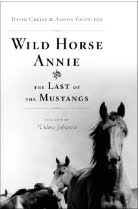








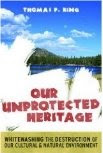



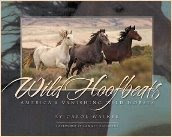




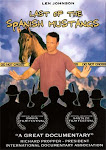





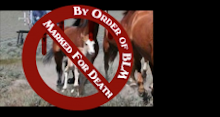
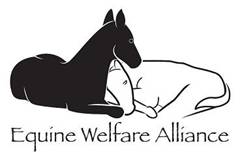
5 comments:
What is the status of getting an independent audit on the current population of the Mustang herds?
THE SOLUTION COMES UP EVERY MORNING....
harvesting the solar energy of the west makes far more sense than killing these horses for the sake of greed.
Janet Ferguson says. . .
wow, thanks for going rogue about google; glad to hear you are voting with your feet. good luck and thanks for considering this important aspect for your readers.
Feral horses not wild horses! They should be REMOVED from public lands and the government should immediately CEASE spending money on any managment. These are invasive, non-native animals and should NEVER be allowed to use public lands which should be designated for native animals not an invading species. Great if people want them on their private lands or to set up a preserve but public lands should be used for American wildlife.
Anonymous - the one ranting about feral horses. Guess what? You are WRONG. Horses actually originated in North America, and lived here for millions of years, spreading to other continents via the land bridges that came and went over that period.
An unknown extinction event was thought to have wiped them out here, but very recent DNA discoveries have shown that not only did horses persist here for thousands of years later than had been previously thought, but also that they may never have been completely gone.
The Spaniards reintroduced the horses to their homeland in the 1500s. Mitochondrial DNA studies prove the these horses were that exact same species as the latest known horse (at that time). They all are Equus Caballas. They are indeed a reintroduced native species, and are accepted as such by ecologists. They and the ranges were doing fine for 500 years before humans came along and started replacing them with millions of cattle.
The Eurasian cattle - which outnumber the horses by about 400 to one - are the invasive, non-native species that shouldn't be on public land.
Post a Comment